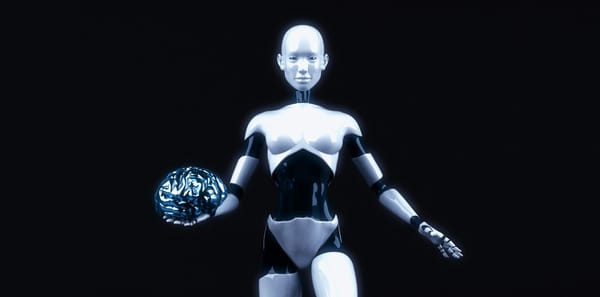AI and Job Descriptions: A Perfect Match for Modern Recruitment
In the modern world, recruitment has gone way past its traditional methods. The modern recruitment structure has come a long way and has evolved massively in terms of attracting top talent and enhancing candidate experience. This evolution is, of course, powered by technology.
All these technological advancements bring many new aspects to organizational recruitment and enable digital realms to businesses that candidates and employers can use. The old-style recruitment functions are already transforming into digital and provide better services for everyone. Nonetheless, technology keeps evolving every day, and so organizations get the chance to use even more tools to step up their game, such as AI-powered tools. All the success now is based on agility and innovation, meaning that the better understanding the current organizational landscape needs, the higher the heights a business elevates.
Why are Detailed Job Descriptions Important
Job descriptions are the foundation for successful recruiting. They are a bridge that connects the businesses and the candidates. But what makes them this special? A lot of reasons, of course, which we’re going to explore:
· Clarity and Alignment: A job description’s role is to correctly align the business’s goals with the role’s responsibilities and objectives. This ensures that the business and the candidate are on the same page.
· Efficient Candidate Matching: A detailed job description clearly showcases the needed qualifications and skills needed for success in the role. The more detailed they are showcased, the better the candidate matching, which helps in finding the best-fit candidates and leads to saving time and resources.
· Improved Candidate Experience: A detailed job description works for both sides. Not only do businesses benefit from finding the best candidates for a role, but they also improve candidates' experience by offering information on the role, business culture, and expectations. This transparency has a positive impact on the candidate's experience.
· Employee Retention: When candidates are provided with a clear understanding of the role, it is more likely to increase their satisfaction and mitigate the chances of early turnover.
These are the core reasons that make detailed job descriptions special. It is very important for both businesses and potential candidates to fully understand a role. Everyone can benefit from them, resulting in higher productivity and employee satisfaction.
AI's Impact on Job Descriptions
One of the continuously evolving technology advancements is Artificial Intelligence, and it has a serious impact on recruitment. It has sparked the transformation of the recruitment process and keeps adding new aspects, revolutionizing it even more. Embracing AI’s powers in recruitment is seriously reshaping job descriptions and changing the way that businesses communicate with candidates to another level. Let’s see how AI revolutionizes job descriptions:
· Inclusivity and Bias: AI’s language model is programmed to kick out any form of biased language, unlike manually crafted job descriptions, which may contain unconsciously biased language.
· Precision: AI is capable of analyzing vast amounts of data, allowing it to craft precise job descriptions for whichever role is asked. It can identify every skill, qualification, and common responsibility of the role and results in better candidate matching.
· Efficiency: AI can generate job descriptions in just seconds. Its speed is unreal and can help HR professionals save a lot of time and spend time on more strategic initiatives.
· Continuous Learning: AI never stops evolving. It can analyze data all the time, allowing it to craft even more effective job descriptions over time.
Leveraging AI’s powers in crafting job descriptions helps businesses step up their game. Contrary to traditional methods of crafting job descriptions, AI provides businesses the power to craft many efficient job descriptions in a matter of minutes, with inclusive language and on-point showcasing of a role. These aspects of AI’s powers help organizations foster a diverse and productive workforce.
Setting up AI for Your Job Description Needs
In the organizational race, where everyone is trying to get ahead of the other, leveraging AI’s powers for your job description needs will give your business the lead. Setting up AI for your job description needs isn’t simple, though. It needs research before choosing the right tool to cover your needs. Here are the steps for choosing and implementing the right AI tool for your job description needs:
1. Set Objectives: Understand what you want to achieve by using AI for crafting job descriptions. Is it to reduce bias or improve efficiency? Maybe to enhance candidate experience? Clarify your goals.
2. Research AI tools: Look for AI-powered tools that specialize in crafting job descriptions. Furthermore, look for other features that they may provide.
3. Choose the Right Tool: After finding all the AI tools that suit your goals, it is time to choose the right one. The criteria for choosing it may be your organization’s size, your specific needs, and if it is compatible with other systems that you may be using.
4. Employee Training and Familiarization: The next step, and a very important one, is to train the business’s employees on how to effectively use the new AI tool and help them familiarize themselves with it. It is also very crucial to make it clear that AI isn’t here to replace anyone, but it is a tool to help them do their jobs more easily and better.
These are the steps for successfully embracing AI’s powers for generating job descriptions. However, things don’t stop here. Businesses have to start testing the AI-generated job descriptions and write down the results. Also, always keep monitoring the results in the future and make sure that nothing is wrong.
In the future, we expect AI to automate and streamline the whole recruitment process. From crafting job descriptions and screening applications to arranging automated interviews and deciding on which candidates are the best fit for the role. What the future holds can be very fascinating, and we can’t wait to see what else AI-powered tools have to offer.




